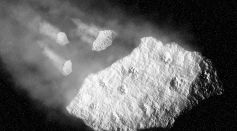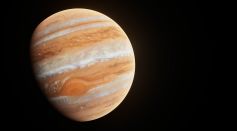Tags: Asteroid Belt

NASA Psyche Mission Goes Into Home Stretch Less Than 100 Days Before Launch

James Webb Space Telescope Detects Water Vapor in the Asteroid Belt, Confirming the Origin of Oceans on Earth

Colosseum-Sized Asteroid Between Jupiter and Mars Discovered; Could This Be the Smallest Finding of NASA's James Webb Space Telescope?

NASA's Lucy is on a Mission to Debunk the Mysterious Origins of the Solar System
New Space Rock Hybrid Discovered Near Sun; Confirmed as Both Comet and Asteroid

UAE Eyeing Venus in Its Next Interplanetary Mission Before Studying the Asteroid Belt Between Mars and Jupiter
NASA's Lucy Space Vessel Set to Obtain New Astronomical Records in Trojan Asteroid Investigation Near Jupiter
Asteroid Belt's Giant Space Rock Presents Unsolvable Puzzle: Vesta Craters Could Shed Light on Earth's Origin
Solar System Estimated to Be Much Younger at 4.55 Billion Years Based on Magnetism Analysis
Dinosaur Killer Chicxulub: Is It an Asteroid or Comet? New Theory Suggests Potential Origin of Space Rock That Ended Dino Species
16 Psyche Asteroid: NASA Sending 2022 Mission to $10,000 Quadrillion-Worth Metallic Space Rock to Study Its Origin
Two Mysterious Red Rocks Discovered in Asteroid Belt Between Mars and Jupiter That May Hold Clues on Solar System's History
Will Dawn Find Life on Ceres? What NASA Has to Say About Possible Life on the Dwarf Planet
NASA’s Dawn Captures Unseen Image of Dwarf Planet Ceres in Asteroid Belt
Evidence of Water Flows Found on Vesta
Most Popular

Largest Known Volcanic Aquifer Discovered Beneath Oregon's Cascades

New 'Supergiant' Sea Bug Found in South China Sea, Named After Darth Vader

Mediterranean Sea Was Refilled by a Catastrophic Flood Millions of Years Ago

Mysterious Cosmic Waves That Sound Like Birds Detected in Unexpected Space Region




